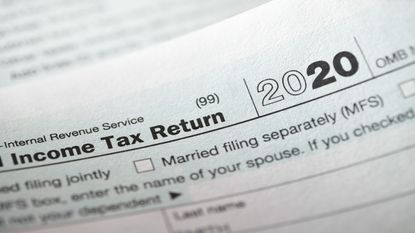
Your IRA administrator will send you a 1099-R, noting your entire distribution; you need to report it to Uncle Sam — and call out what portion was used as a qualified charitable distribution — on your 1040.
When you purchase through links on our site, we may earn an affiliate commission. Here’s how it works.

Question: I am 75 years old and took a $6,300 distribution from my IRA last year. In October, I asked my IRA administrator to send $5,000 to a local education foundation (as a tax-free qualified charitable distribution) and to send me a check for the remaining $1,300. I received a 1099-R from my IRA administrator, and it shows total distributions of $6,300. How do I report the $5,000 I sent to the charity so that money isn’t included in my adjusted gross income?
Answer: A lot of people have that question at this time of year. When you receive your 1099-R, your IRA administrator just reports the amount of money that was distributed from your IRA and doesn’t specify whether it was a withdrawal or a tax-free transfer to a charity. (After you turn 70½, you can transfer up to $100,000 each year tax-free from your traditional IRA to charity, which counts as your required minimum distributions but isn’t included in your adjusted gross income. This is called a qualified charitable distribution, or QCD.)
When you file your Form 1040, you report the total distribution of $6,300 on line 4a. Then report $1,300 on line 4b and enter “QCD” to indicate that the remaining $5,000 is a qualified charitable distribution, which is not taxable. (If you had contributed your full IRA distribution to charity, you would write $0 and “QCD” on line 4b.)
Be a smarter, better informed investor.